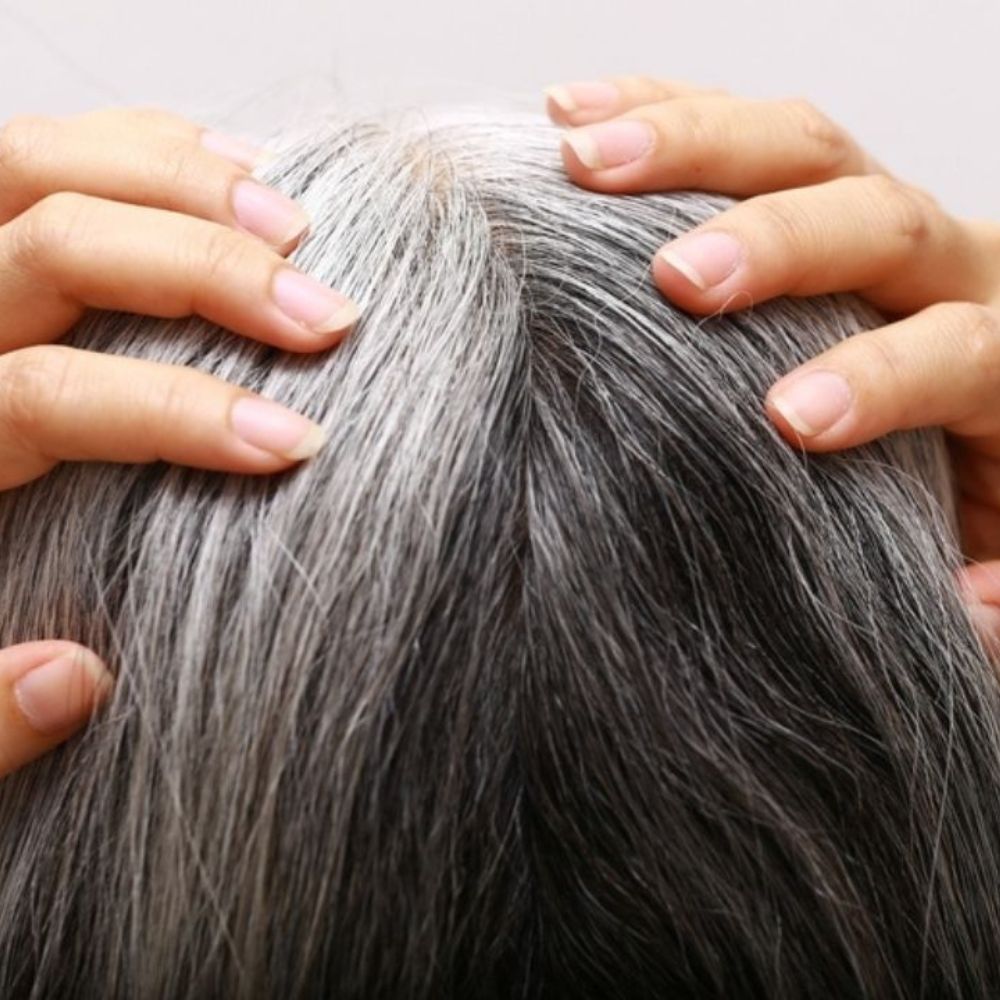How to Get Hair Glue Out of Hair: Best Tips And Tricks to Use
Using hair glue to keep wigs intact is common, however, getting it removed can be tricky. Here is our guide on how to get hair glue out of hair easily.

While using wigs, extensions, or weaves helps accentuate the appearance of hair, getting the glue out of hair used to keep these things intact can be difficult. Yes, we are talking about hair glue! It is a styling product that secures hairpieces and allows you to flaunt different hairstyles without any worries. That said, many people are also concerned about how to get hair glue out of hair. While many think they must head to a salon to get it removed, the truth is hair glue removal doesn’t have to be challenging. In this article, we will talk about various methods to get glue out of hair without causing any damage to your locks. According to Kate Ross, our expert, licensed in cosmetology, “You can remove hair glue at home with oil-based products like coconut oil or special adhesive removers. Apply, let it sit, and gently comb it out.”
When removing glue from hair, many people believe that it’s a regular adhesive, but that’s not the case. Hair glue is latex-soluble, which means it dissolves more easily than other types of adhesives (1). Moreover, other types of glue are used to secure protective styles. Before you remove hair glue, it’s important to know what type of glue was used in the first place. Read below to know more!
Types of Hair Glues

1. Latex-based Glue
Latex-based adhesives are in liquid form and are used due to their potent properties, including moisture resistance. With exposure to heat, they form a rubber base that helps hold extensions to the scalp. Using this glue for hair extensions means your hairpiece will be protected for two to three weeks. For removing latex-based glue, it’s best to use soap and lukewarm water.
2. Silicone-based Glue
The difference between latex and silicone glue is that the latter holds extensions for up to six weeks. Also, no heat is required to harden this type of glue. The difficulty level of removing silicone-based glue from hair is a bit more as compared to latex. A solvent-based remover can help you soften the glue and pull it out of your hair.
3. Keratin Polymer-based Glue
The glue hair removal process is really easy with keratin polymer-based glue. Crafted with a protein base, keratin polymer glues can be removed using warm water or a citrus-based solvent.
Now that we have understood the various types of hair glues, let’s explore the various tips on how to remove bonding glue from hair.
How to Get Hair Glue Out of Hair: 6 Highly Effective Methods
1. Use a Shampoo And Conditioner

This might be one of the simplest and most pocket-friendly ways to loosen hair glue and remove it completely. Take equal amounts of shampoo and conditioner and mix it. Wet your hair generously and apply this, coating every hair strand. Leave it be for about 10 minutes, and then rinse it off with water.
While you rinse water out of your hair, take a clean, wide-tooth comb and work it on your extensions gently. This will help get rid of the loosened glue. Once you are done, use a mild conditioner to keep your hair hydrated and restore the pH levels of your scalp.
2. Coat Hair with Apple Cider Vinegar
If you don’t succeed in removing hair bonding glue with the shampoo and conditioner method, you can take the help of apple cider vinegar. ACV is considered a good natural ingredient to remove residue from hair (2). It is one of the most popular methods to remove stubborn hair glue.
Take apple cider vinegar and water — the ratio in which you mix should be 1:4. Mix well and pour this into a spray bottle. Apply this on your hair and set a timer for 5 minutes. Using a wide-toothed comb, remove all remaining pieces of glue. Once all the glue is removed, deep condition your hair to add moisturization to your scalp. You can also repeat the process if all the glue is not removed in one go. Make sure to not keep apple cider vinegar on your hair for more than 5 minutes, and remember to follow up with a deep conditioner.
3. Spray Some Rubbing Alcohol
Although acetone is not considered good for hair, it is considered a useful ingredient when it comes to removing glue from hair. When using this trick, it’s important to not leave the ingredients on hair for too long and follow with a conditioner to bring back the lost moisture to your scalp.
For this method, you’ll need a nail polish remover or 70% rubbing alcohol. Take a few clean cotton balls and soak them in the acetone/alcohol. Place them wherever there is glue on your hair and use bobby pins to keep the cotton balls from falling out. Leave them be for about 15 minutes. Then, gently remove the bobby pins and cotton balls, and just like the above methods, run a comb through your hair to loosen and remove the glue. Once you are done removing the glue from your hair, wash and condition your tresses.
4. Try Peanut Butter

Peanut butter is another highly effective way to remove glue from your hair. Since it is rich in fatty acids, it helps loosen up the glue. Take creamy butter and apply it liberally on your hair. Cover your hair with a shower cap and let it sit for about half an hour. Then, wash it off with water. Use a deep conditioner and then run a comb through your hair to get rid of the glue.
5. Dish Soap to Your Rescue
Dish soap can indeed strip your hair of its natural oils, but you can use it once to get rid of stubborn glue from your hair strands. Wet your hair with water and lather it using dish soap, focusing on areas where glue is present. Let it stay on your hair for about 20 to 25 minutes, then wash it off properly using water. Make sure to use a conditioner after this.
6. Rub Petroleum Jelly on Your Hair
Petroleum jelly contains mineral oils and waxes and is considered a thick lubricant that can help you loosen the glue. Rub a small amount of petroleum jelly on the glued areas of your hair and let it stay for about 40 minutes. Then comb your hair and remove the glue using your fingers. Follow with a shampoo and conditioner.
7. Use Ice Cubes
Ice is another useful hair glue remover ingredient that can be used in the comfort of your home without shelling out money. Kate Ross further says, “Super cold water hardens the glue lessening its stickiness for easier removal.” Take a small plastic cup and fill it with water. Take a popsicle stick and put it in the cup. Keep this in the freezer and once frozen, take it out. Use a towel to cover your shoulders and prevent your clothes from getting wet. Apply the ice to glued areas of your hair and then remove the glue using your fingers and a comb.
8. Dab Oil on Your Hair

Hair oils not only help nourish hair strands but can also help you get out of the messy situation wherein you are tired of finding ways to get glue out of your hair. The best thing about this method is that it is safe — oiling hair can help strengthen hair follicles, add shine to hair, and prevent hair breakage (3).
When using it to remove the harsh glue, take any plant-based oil, like coconut, sunflower, or olive, and apply it liberally on your hair. Wear a shower cap and let your hair be immersed in oil for about 30 minutes. When you feel that the glue is loosening up, remove the cap and comb slowly and gently to remove the glue. Follow with a shampoo and conditioner.
Note: Although acetone and alcohol might seem the easiest methods to remove glue from hair, it’s best to not give in to the temptation and try other methods first. Start with the less damaging tips, and if they don’t work, you can try acetone or alcohol. Also, if you have a sensitive scalp, consult a professional hair stylist before trying these methods.
Are There Any Household Items That Can Remove Glue from Hair?
Yes, as mentioned above in the remedies, ice, hair oils, and petroleum jelly are a few household items that are readily available and are efficient enough to loosen hair glue and get it out of your hair.
Our contributor Gwenda Harmon, says, “The easiest way to remove glue from hair is to use any kind of oil. The best way is to use almond oil since it can also protect the hair and offer nourishment such as antioxidants and vitamins that can help soothe and hydrate the skin.”
What Should Not be Used to Remove Glue from Hair?
Avoid using 100% alcohol to remove glue from hair. Also, acetone and dish soap can be harsh on hair, so if you want to try these remedies, it’s best to wash your hair properly with a mild shampoo and conditioner.
How to Take Care of Hair After Removing Glue?

After you have removed hair glue, it’s important to take care of your tresses to avoid any damage.
Make sure to use a hydrating conditioner and shampoo for a few weeks after removing glue from your hair. Also, after trying your preferred home remedy, follow with a shampoo and deep conditioner. Avoid using haircare products packed with chemical additives, including parabens, sulfates, alcohol, and artificial fragrances, as these can further damage your hair.
Consider using a hydrating hair mask to replenish dry strands and keep your hair shiny and healthy.
You can also go for a hair steam treatment to unclog pores and release toxins from the scalp.
How to Remove the Remaining Bits of Glue?
As mentioned above, using ice can help you get rid of the remaining bits of glue that seem too stubborn. Using ice works effectively for stubborn glue particles that might remain after you’ve tried another DIY method. But the best thing is that ice can be used along with other remedies. So, give this method a try to remove glue from your hair.
Conclusion
Every day must be a happy hair day, but once you start using wigs and hair extensions, this question of ‘how to get hair glue out of hair’ might start haunting you. But with our complete guide on hair glue removal techniques, you can easily get rid of the particles without hurrying to a salon or burning a hole in your pocket. Try gentle remedies first, which include using an oil soak or simply washing hair with shampoo and conditioner. If it doesn’t work, you can try other methods like using Vaseline or acetone on hair. If nothing works, then know it’s time to consult a professional.
Contributor: Kate Ross
ALSO READ: Jojoba Oil for Hair: 7 Impressive Benefits And Ways to Use





 JOIN OUR WHATSAPP CHANNEL
JOIN OUR WHATSAPP CHANNEL






















































